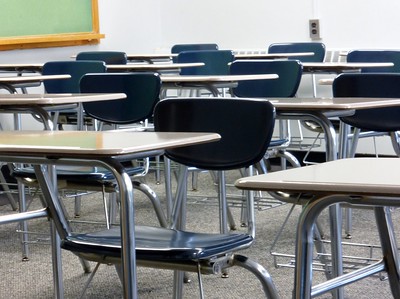Washtenaw County higher education institutions will have some work to do to maintain enrollment in the coming years. The University of Michigan will always fill its classes, but Eastern Michigan University and Washtenaw Community College have a different reality.
Classrooms aren’t empty for lack of people. Generation Z is about the same size as the Baby Boomer generation. Instead, there are a lot of high school students (and high school graduates) who don’t know what to do after graduation. And when I say, “don’t know what to do,” I mean they do not know how to complete the application process, file for financial aid, choose classes, take standardized tests, etc. As a result, many students who could otherwise continue their education work instead. Getting a job is the path of least resistance.
Recently, I read an article about two Hispanic brothers living in the Denver area. The older brother works full-time, while the younger brother goes to school. It’s not as though the older brother didn’t want to go to college. (He did.) But as the article revealed, he didn’t know how to get there.
Making sure high school students know how to get to college sounds like basic stuff. And the pandemic hasn’t helped. Students who would go to college have missed out on the critical interactions with teachers and counselors. These ordinary encounters normally push students in the right direction.
What’s stopping students in Washtenaw County
Without these interactions, simple procedural problems stop these high school students. For example, Michigan’s FAFSA filing deadline is March 1 for financial aid for the fall semester. For students who miss that deadline, there will be no meaningful federal financial aid. Some schools (not WCC) require students to supply SAT scores as part of their application. If the student hasn’t taken this test or released the scores to his or her preferred institution, admission to a selective school may not be an option. Students who did not get admitted to their preferred school may not realize that transferring from another institution is still an option.
These are the challenges that high school students face. Other prospective students may have graduated from high school years earlier and no longer have the support of counselors and teachers. They need to figure out the admissions process themselves or rely on the institution’s academic counselors for assistance.
Doing nothing or continuing to employ the same unsuccessful strategies for recruiting students won’t work. Georgia State University’s National Institute for Student Success rigorously tracks more than 800 risk factors that can interfere with students’ abilities to remain enrolled. When the tracking software flags signs of student stress, the school intervenes immediately. As a result, Georgia State University graduates Black and Hispanic students at the same rate it graduates white students.
The best excuse the WCC administration can offer for its empty classrooms is “the enrollment cliff.” Realistically, WCC needs to do much more to recruit, support and retain students from all age brackets and demographic groups. And for an institution that has more than a dozen Vice Presidents on the payroll, Washtenaw County taxpayers have a right to expect much more than excuses.
Photo Credit: Lorianne DiSabato , via Flickr




















